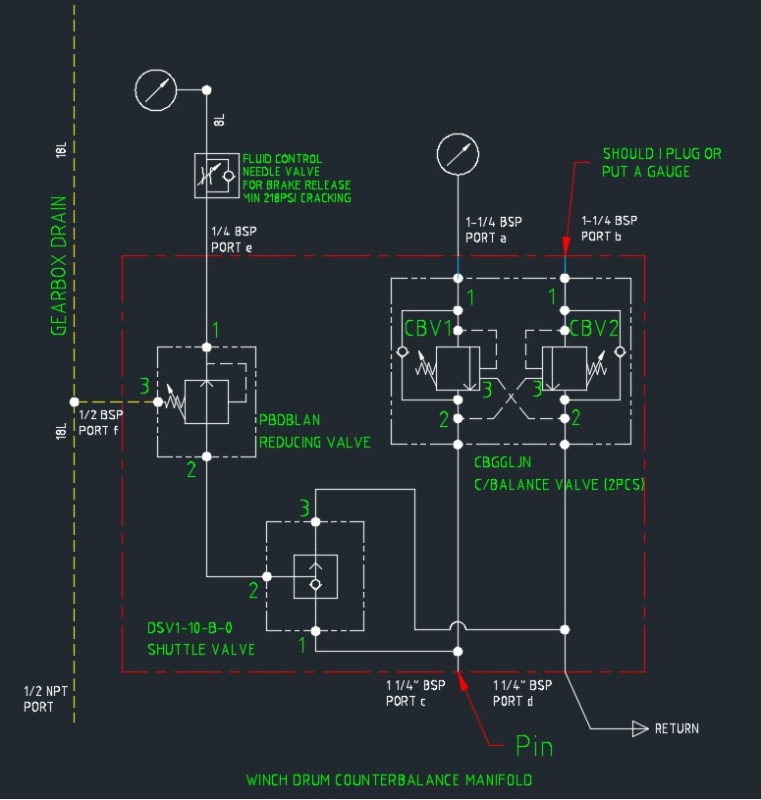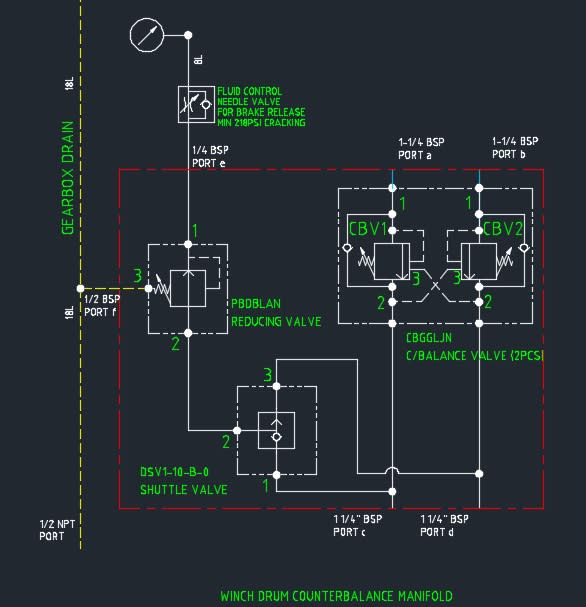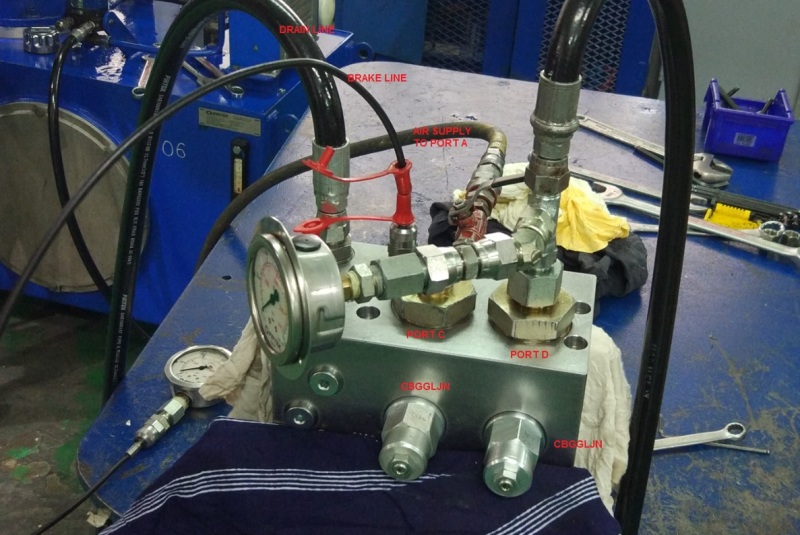73lafuite,
Yes, i notice that on the manual and has put it into concern.
Meanwhile, we did the test on the system and so far the stand alone manifold can assure a free return of the brake line. The difficult part is to get a full test due to the HPU/Winch is not with us currently.
Here's how we did the test:
Required Pressure: 273 Bar (Setting Pressure) (Supply and output)
Cracking pressure for CBV1 = 273/4.5
= 60 Bar (this is the minimum pressure supply from Port d to allow return flow from the winch to Port a)
1. Connect Port d with supply pressure in our case 60 Bar supply with a pressure gauge.
2. Connect Port a to air supply (air compressor unit) with ball valve.
3. Connect Port f to a pressure gauge.
4. Plug Port b.
5. Open Port c.
6. Now start the main HPU and increase the pressure on Port d until it reach 60 Bar. At the same time open the compressed air supply.
7. Adjust the CBV1 until the air from the Port a is release to Port c simultaneously when the pressure reach 60 Bar at Port d.
8. Turn the CBV CCW to increase the pressure.
9. Once the pressure is set, stop the air supply.
10. Now set the PBDBLAN reducing valve to 50 Bar. Do not off the main HPU yet.
11. Once PBDBLAN is set, quick release the main pressure and make sure the pressure on Port f drop to zero simultaneously with the main pressure. That is to ensure that the brake is working fine.
12. Now you can off the HPU, and do the setting for the CBV2. Supply the 60Bar pressure to Port c and connect the air supply to Port b.
13. Repeat Step 3-11.
R.Efendy




